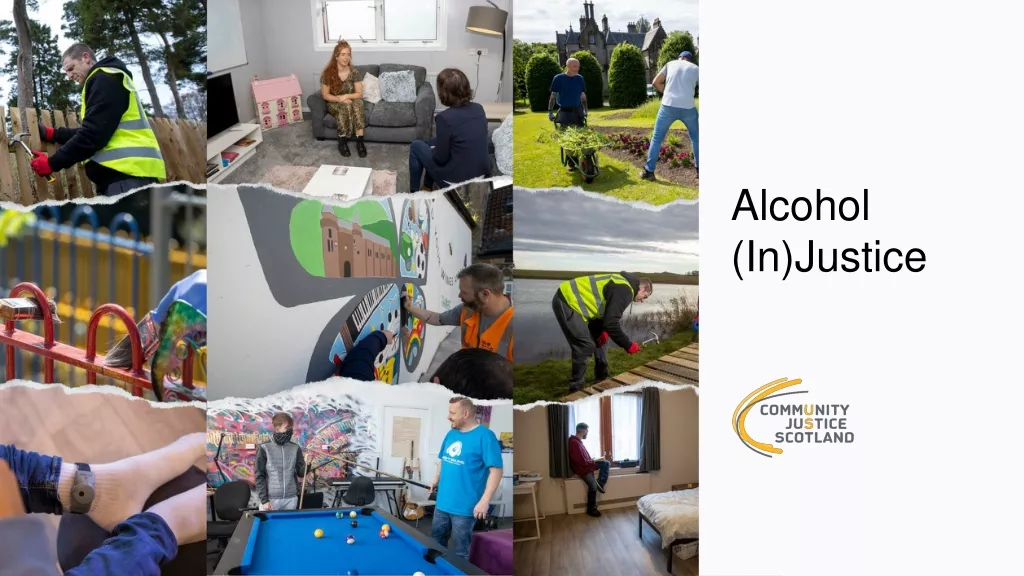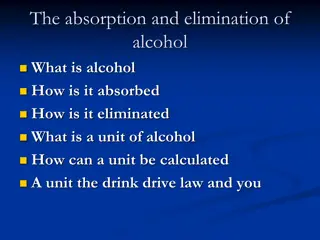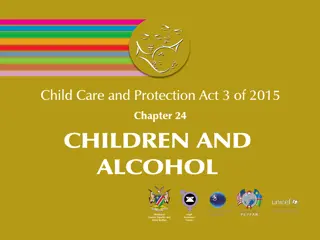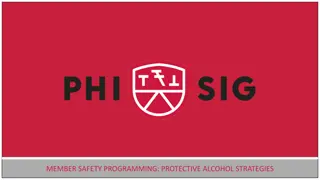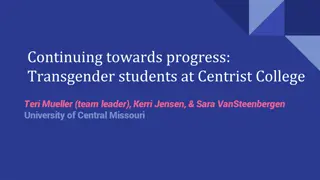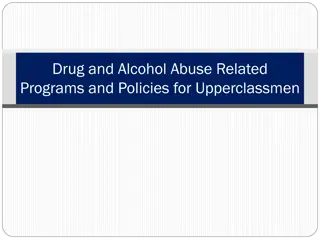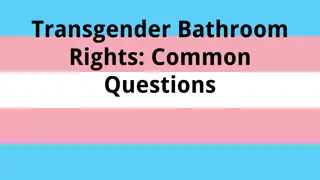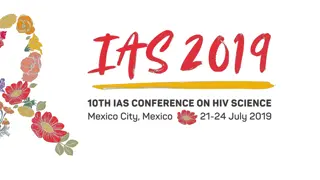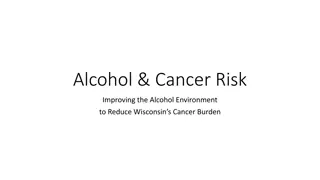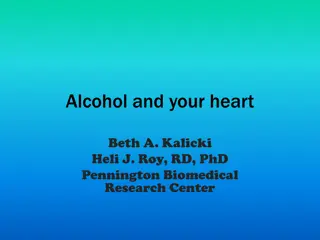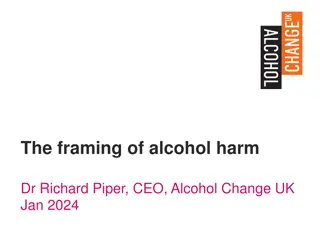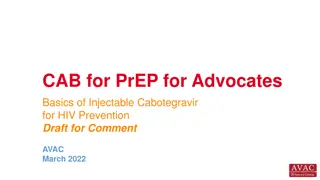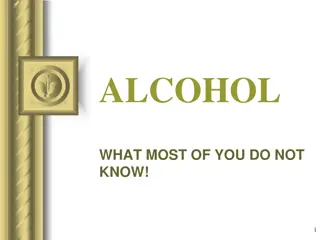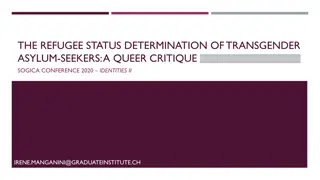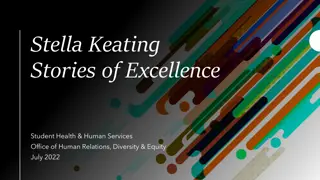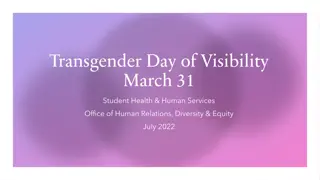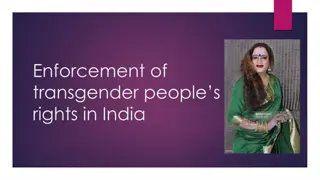Regular Alcohol Consumption and HIV Risk in Transgender Women
This presentation explores the link between regular alcohol consumption and the risk of HIV infection in transgender women in Fortaleza, Northeast Brazil. It sheds light on the impact of harmful alcohol use on HIV transmission, treatment, and vulnerability among this population, highlighting the need for effective interventions.
Download Presentation

Please find below an Image/Link to download the presentation.
The content on the website is provided AS IS for your information and personal use only. It may not be sold, licensed, or shared on other websites without obtaining consent from the author.If you encounter any issues during the download, it is possible that the publisher has removed the file from their server.
You are allowed to download the files provided on this website for personal or commercial use, subject to the condition that they are used lawfully. All files are the property of their respective owners.
The content on the website is provided AS IS for your information and personal use only. It may not be sold, licensed, or shared on other websites without obtaining consent from the author.
E N D
Presentation Transcript
Regular consumption of alcohol and risk of HIV Regular consumption of alcohol and risk of HIV infection in transgender women in Fortaleza, infection in transgender women in Fortaleza, Northeast Brazil Northeast Brazil Sandra Brignol @sandrabrignol Share your thoughts on this presentation with #IAS2019 #IAS2019 Share your thoughts on this presentation with
3.Background: 3.Background: consumption of alcohol and risk of HIV infection consumption of alcohol and risk of HIV infection We know that harmful use of alcohol (HUA) is a public health problem1 World Health Organization (WHO) Harmful alcohol use is : People 18 years old or older people who drink alcohol once or more times a week1. Average world- 195 coubtries: two glasses of wine (300 ml This pattern consumption: The causal relationships between HUA and HIV2,3 I ncreases the risk of HIV transmission, Interferes in treatment - (adherence and treatment efficacy) Unprotected sex, etc Sexual Violence
4.RAC in transgender women population 4.RAC in transgender women population 1.RAC in world 2.RAC in Brazil7,8 Los Angeles e Chicago (EUA): 88% (sex workers) S o Francisco (EUA)14: 58% and 69% EUA15 (2017): 21.5% In general population: 24% Transgender Women: 74.2% in Fortaleza city (2016) Uberlandia- MG(2013): 85% (sex workers) The vulnerability of transgender women in Brazil is very large9,10 Increases the problem of alcohol in recent literature review2,3. Violence, stigma and discrimination are systematic (every day) Violation of Human Rights Sexual work is common in the face of social exclusion
5. 5. Methods Methods: : Divas Divas Research Research 12 12 cities cities in in Brazil Brazil (2015/2017) (2015/2017) Total sample size Brazil: 2,846 transgender women These results are a part of the Divas survey Bel m Fortaleza city: 1. Manaus Fortaleza Data collect: between October 2016 and July 2017 (RDS study)* Sample size: 348 transgender women Recife 2. Fortaleza is the third largest city in northeastern Brazil and important tourist city of the country. Salvador Bras lia We defined RAC = Harmful alcohol use (WHO) Belo Horizonte Campo Grande Rio de Janeiro S o Paulo Curitiba *Others informations: Bastos, Francisco I., et al. "HIV, HCV, HBV, and syphilis among transgender women from Brazil: assessing different methods to adjust infection rates of a hard-to-reach, sparse population." Medicine 97.1 Suppl (2018). Porto Alegre
small) ): : HIV infection HIV infection 5. Background ( 5. Background (small HIV in Brazil4,5,6 In general population: 0.6% Transgender women: 31.2% (18.8-43.6)CI 95% HIV in othes countries7,8 Transgender women Baral et al (2013): all contries 19.1% (17.4-20.7)CI 95% Low-income and middle-income countries 17.7% (15 6-19 8) 95% CI Poteat et al (2016) USA : 40%
6. 6. Results Results RAC RAC regular regular alcohol alcohol consumption consumption: : RDS recruitment chain 1. The average consumption of alcohol in the last three months was HIV+: 20.5% (11.0-30.1) CI 95% 44.8% (37.0-52.7) CI 95% (RDS II) RAC and HIV+: 29.4% (18.6%-40.2%) 2. Factors associated with RAC: OR (CI 95%) HIV: OR = 2.1 (1.04-4.2) Smoking Tobacco: OR = 3.0 (1.7-5.3) Use of crack/cocaine: OR = 4,5 (2,1-9,5)
7. 7. Results Results*: *: profile profile of transgender women (RAC) of transgender women (RAC) Vulnerability Age Don t Know PEP: 82.0% 18 to 24: 45.3% 24 to 64: 54.7% Don t Know PrEP: 93.8% Monthly income**: up to U$ 238,5: 70.1% U$ 238.5 to U$ 954: 27.6% Tobacco: 73.1% informal employment: 90.0% Marijuana: 40.5% elementary School : 64.1% high school: 33.3% higher education: 2.3% Crack/cocaine: 41.6% Sex worker: 37.6% Black: 84.41% * Estimate to RDS II **approximate value
8. Conclusions 8. Conclusions The prevalence RAC in TW is double compared to Brazilian general population And others populations transgender women- USA We found an association between RAC and HIV increases the risk of HIV infection The association of RAC, Cocaine and/or Crack indicates urgent interventions to reduce health problems (mental and generate health) We found a scenario of social vulnerability among participants (stigma and violence systematic in their life) We know: recent results in literature and others present in IAS 2019 Message: Reducing stigma, discrimination, and violence in the transgender women remains a major challenge in Brazil
Thanks Thanks Department of diseases of chronic conditions and sexually transmitted infections Contact: email: sandrabrignol@id.uff.br
9. 9. References References 1. 2. World Health Organization. Global status report on alcohol and health 2018. Geneva; 2018. Licence: CC BY-NC-SA 3.0 IGO. Baliunas D, Rehm J, Irving H, Shuper P (2010). Alcohol consumption and risk of incident human immunodeficiency virus infection: a meta-analysis. Int J Public Health. 55(3):159 66. Woolf-King SE, Maisto SA (2011). Alcohol use and high-risk sexual behavior in Sub-Saharan Africa: a narrative review. Arch Sex Behav. 40(1):17 42. Baral SD, Poteat T, Str mdahl S, Wirtz AL, Guadamuz TE, Beyrer C. Worldwide burden of HIV in transgender women: a systematic review and meta-analysis. Lancet Infect Dis. 2013 Mar;13(3):214-22. Brasil . Minist rio da Sa de. Boletim Epidemiol gico. Grinsztejn B, Jalil EM, Monteiro L, Velasque L, Moreira RI, Garcia AC, Castro CV, Kr ger A, Luz PM, Liu AY, McFarland W, Buchbinder S, Veloso VG, Wilson EC; Transcender Study Team. Unveiling of HIV dynamics among transgender women: a respondent-driven sampling study in Rio de Janeiro, Brazil. Lancet HIV. 2017 Apr;4(4):e169-e176. B aral SD, Poteat T, Str mdahl S, Wirtz AL, Guadamuz TE, Beyrer C. Worldwide burden of HIV in transgender women: a systematic review and meta- analysis. Lancet Infect Dis. 2013 Mar;13(3):214-22 Brasil. Minist rio da Sa de. Pesquisa Nacional de Sa de, 2013 Kerr-Corr a, F., J nior, P., Leal, F. M., Martins, T. A., Costa, D. L. D. C., Macena, R. H. M., ... & Kerr, L. R. F. S. Hazardous alcohol use among transwomen in a Brazilian city. Cadernos de Sa de Publica, 33(3). 2017 10. Magno L, Dourado I, Silva LAV. Estigma e resist ncia entre travestis e mulheres transexuais em Salvador, Bahia, Brasil. Cad Sa de P blica 2018; 34:e00135917. 11. Magno, Laio, et al. "Estigma e discrimina o relacionados identidade de g nero e vulnerabilidade ao HIV/aids entre mulheres transg nero: revis o sistem tica." Cadernos de Sa de P blica 35 (2019): e00112718. 12. Bastos, Francisco I., et al. "HIV, HCV, HBV, and syphilis among transgender women from Brazil: assessing different methods to adjust infection rates of a hard-to- reach, sparse population." Medicine 97.1 Suppl (2018). 13. Pan American Health Organization and Joint United Nations Programme on HIV/AIDS. HIV Prevention in the Spotlight: An Analysis from the Perspective of the Health Sector in Latin America and the Caribbean, 2017. Washington, D.C.: PAHO, UNAIDS; 2017. 14. Transgender Youth Substance Use Disparities: Results From a Population-Based Sample.Day JK, Fish JN, Perez-Brumer A, Hatzenbuehler ML, Russell ST.J Adolesc Health. 2017 Dec; 61(6):729-735. Epub 2017 Sep 21. 15. Gonzalez CA, Gallego JD, Bockting WO.Demographic Characteristics, Components of Sexuality and Gender, and Minority Stress and Their Associations to Excessive Alcohol, Cannabis, and Illicit (Noncannabis) Drug Use Among a Large Sample of Transgender People in the United States. J Prim Prev. 2017 Aug;38(4):419-445. doi: 10.1007/s10935-017-0469-4. 3. 4. 5. 6. 7. 8. 9.


